LOUISVILLE, Ky. — It has been nearly two years since the first person in Kentucky tested positive for COVID-19.
And tonight we are tracking some of the highest COVID hospitalizations yet.
HOSPITALIZATIONS IN KENTUCKY
Here's a look at the numbers across Kentucky.

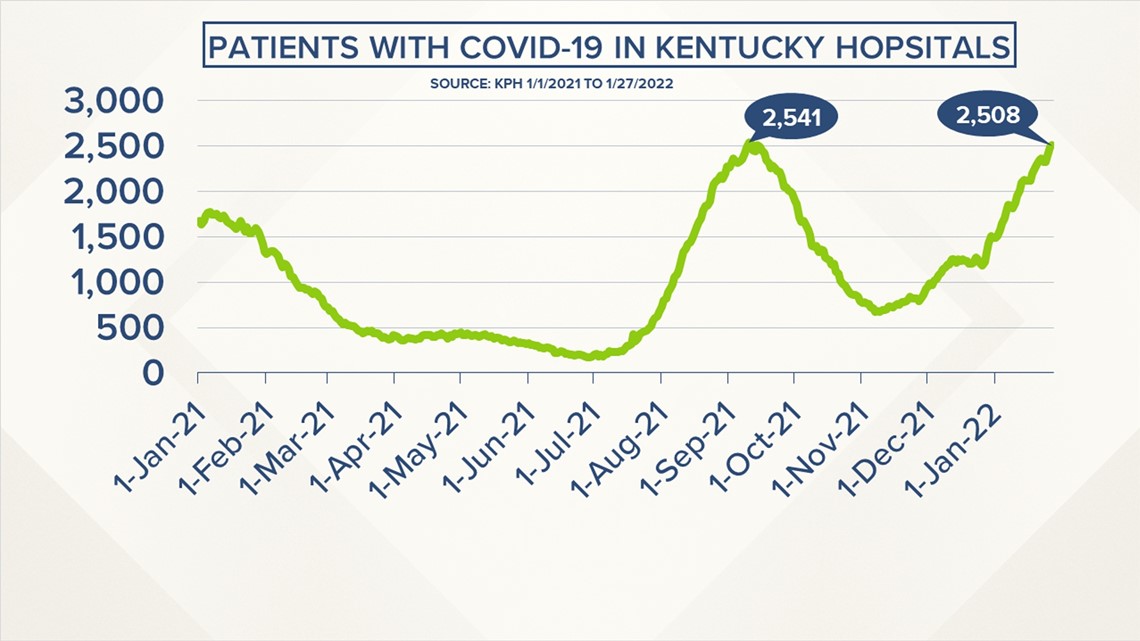
That line shows the number of COVID patients in the hospitals across the Commonwealth each day since last January 2021.
Tonight more than 2,500 people are in the hospital with COVID.
That is near the all-time high we saw back in September.
For context, let's compare the current surge to the surge we saw in September.
When hospitalizations hit the high in September, the positivity rate reported by Kentucky Public Health was around 14% and the 7-day average of new cases per day was nearly 4,000.
In comparison, the current positivity rate has doubled, more than 30% or about 1-third of those tested are infected. The average number of new cases each day this week was more than 12,000, which is three times the rate compared to the spike in September.
HOSPITALIZATIONS IN JEFFERSON COUNTY, KENTUCKY
Here is a look at the hospitalizations in Louisville over the past five weeks.

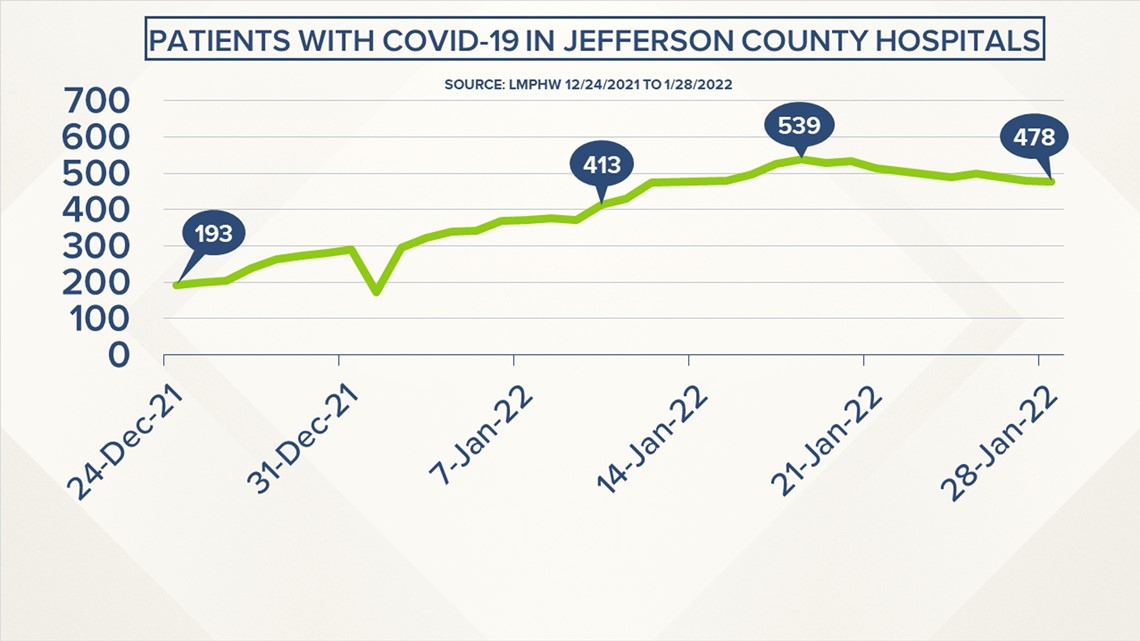
On Jan. 10, Louisville's Department of Public Health and Wellness reported that 413 people in Jefferson County were hospitalized.
Moving to the right on the graph above, we see that number continues to rise to as many as 539 patients on Jan. 18.
Tonight, nearly 500 people are still in the hospital with COVID-19.
But if omicron is believed to be a less severe variant, why are record amounts of people in the hospital?
WHAS11 asked UofL Health's Chief Medical Officer Dr. Jason Smith and he said it's a matter of numbers.
"It is probably less severe than Delta, but whereas before you had 100 patients with it, now you've got 1000, so even though it's less severe and you're less likely to be hospitalized, the denominator is so large that it's leading to the increased number of admissions," Smith said.
Historically, about 3% of those infected need hospital treatment while less than 1% are admitted into the ICU, according to Kentucky Public Health data.
Basically, Smith is saying even though a small number of those infected need hospital care, there are so many people getting infected that the small percentage adds up to a large number of admissions.
While Louisville hospitals may be seeing a higher number of patients, what they don't have is a record number of people in the ICUs.
KENTUCKY INTENSIVE CARE OCCUPANCY
Here's a look at ICU beds filled each day since June 2020.

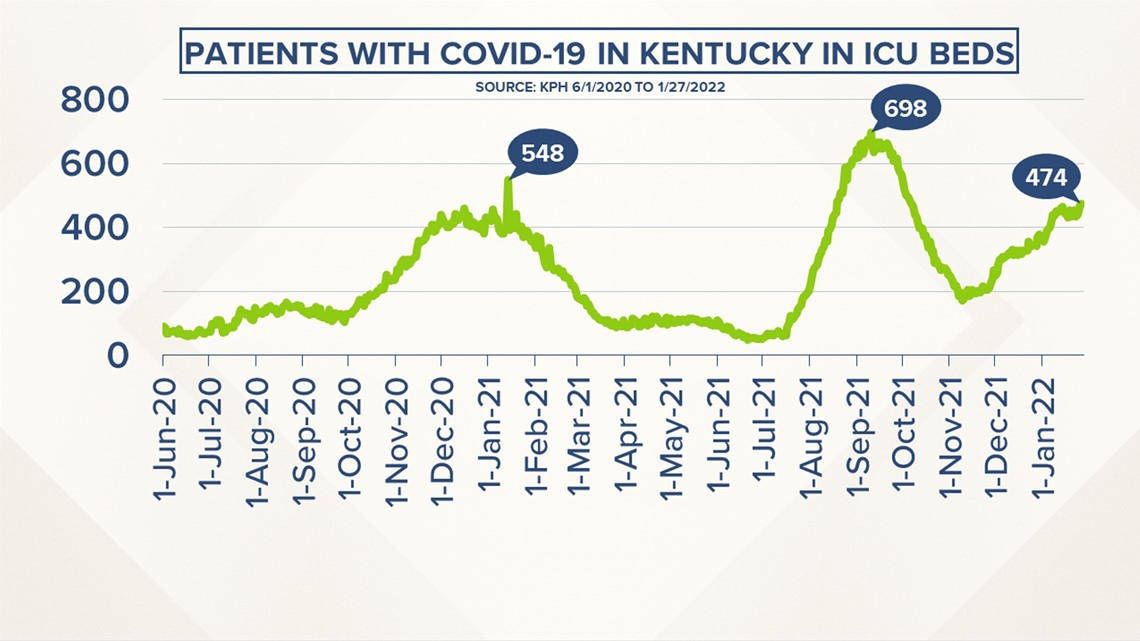
Moving left to right, you can see people in intensive care spiked in January 2021 and then again in September.
On the far right, you can see that today, there are nearly 500 people in the ICU severely ill but in comparison to surges in the past, it is well below the all-time high.
Smith pointed out a similar trend here in Louisville. "I think during the previous peaks we had between 60 and 70 in the ICUs alone, now we're running 30 even though we've got almost 100 or so more in our prior peaks."
OVERALL HEALTHCARE CAPACITY IN KENTUCKY
From emergencies to surgeries, our healthcare system treats people for more than just COVID-19. Their ability to care for patients depends on how fast COVID is spreading.

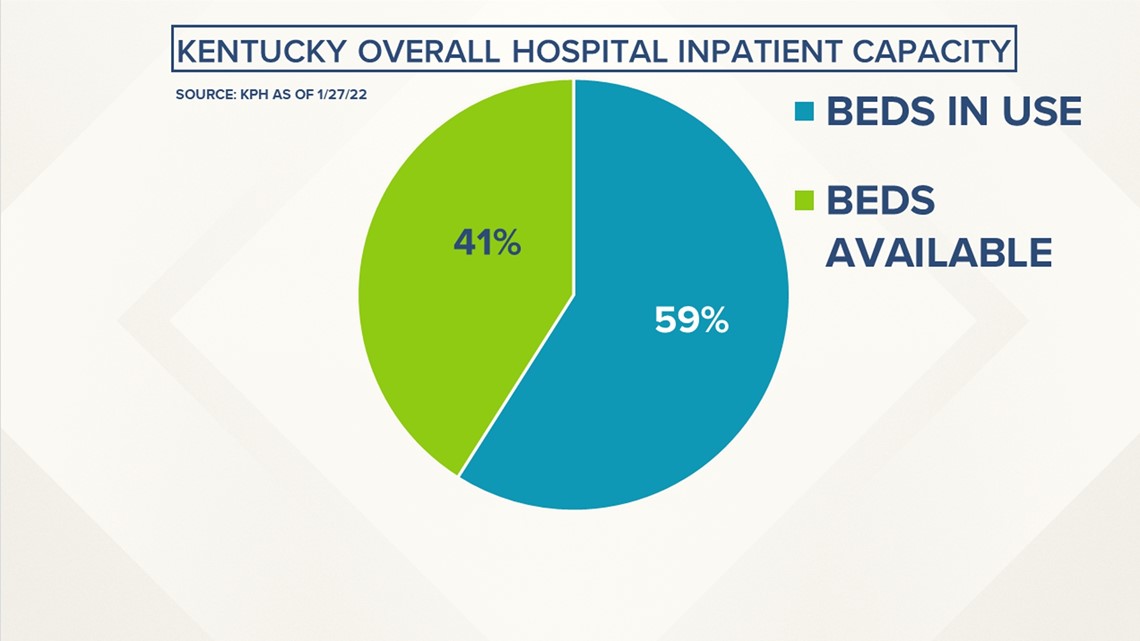
About 41% of hospital beds are available.

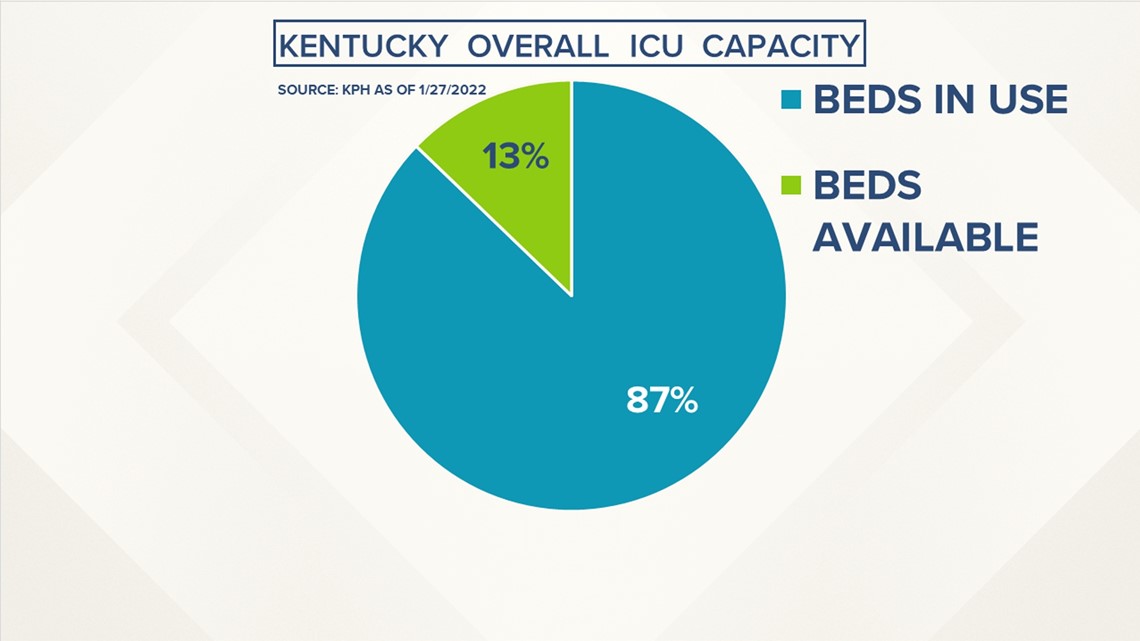
Only about 13% of ICU beds are open.
We'll continue to track all the trends to give you more than the numbers but the context to understand what they mean for you and your family.
Make it easy to keep up-to-date with more stories like this. Download the WHAS11 News app now. For Apple or Android users.
Have a news tip? Email assign@whas11.com, visit our Facebook page or Twitter feed.

